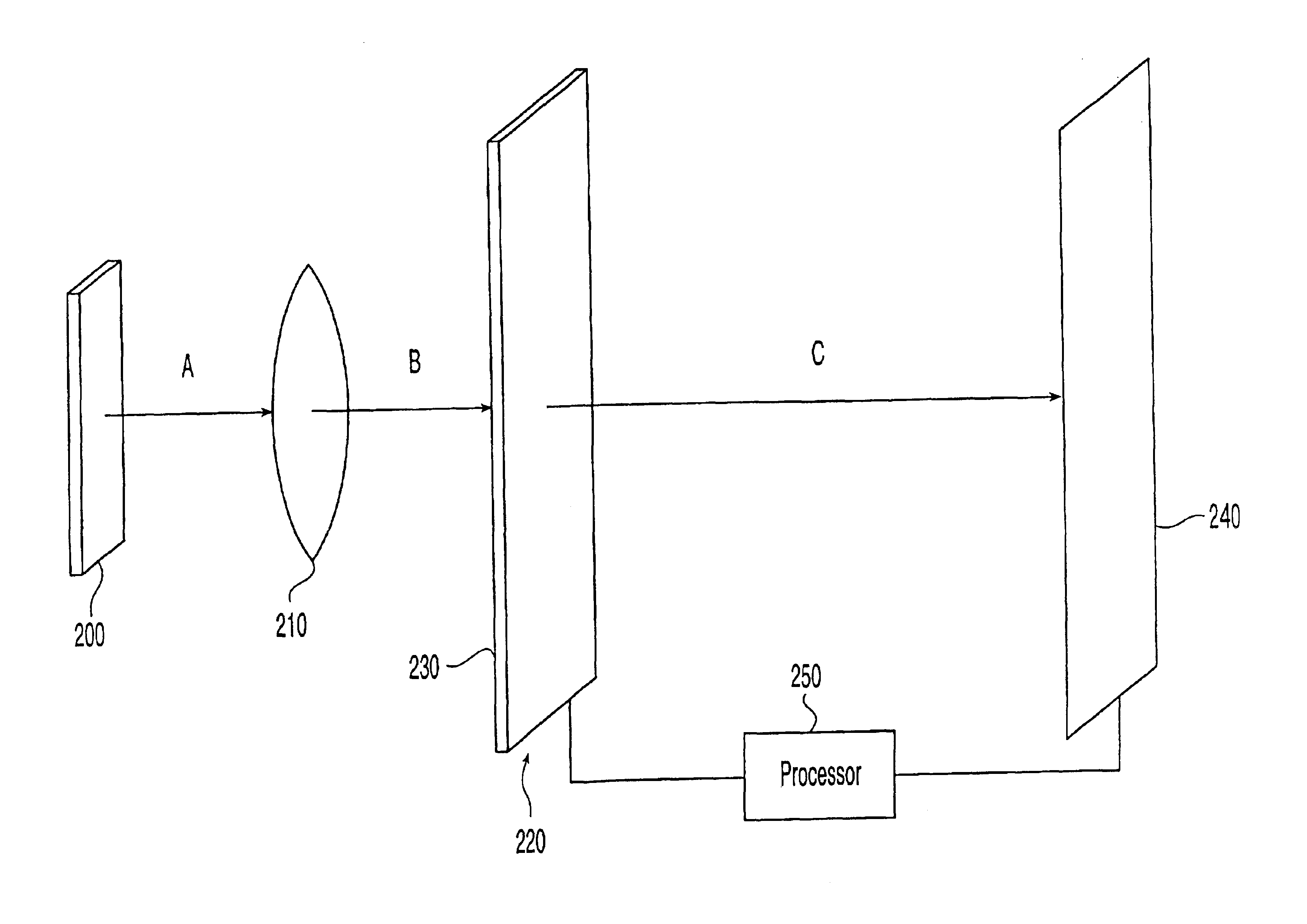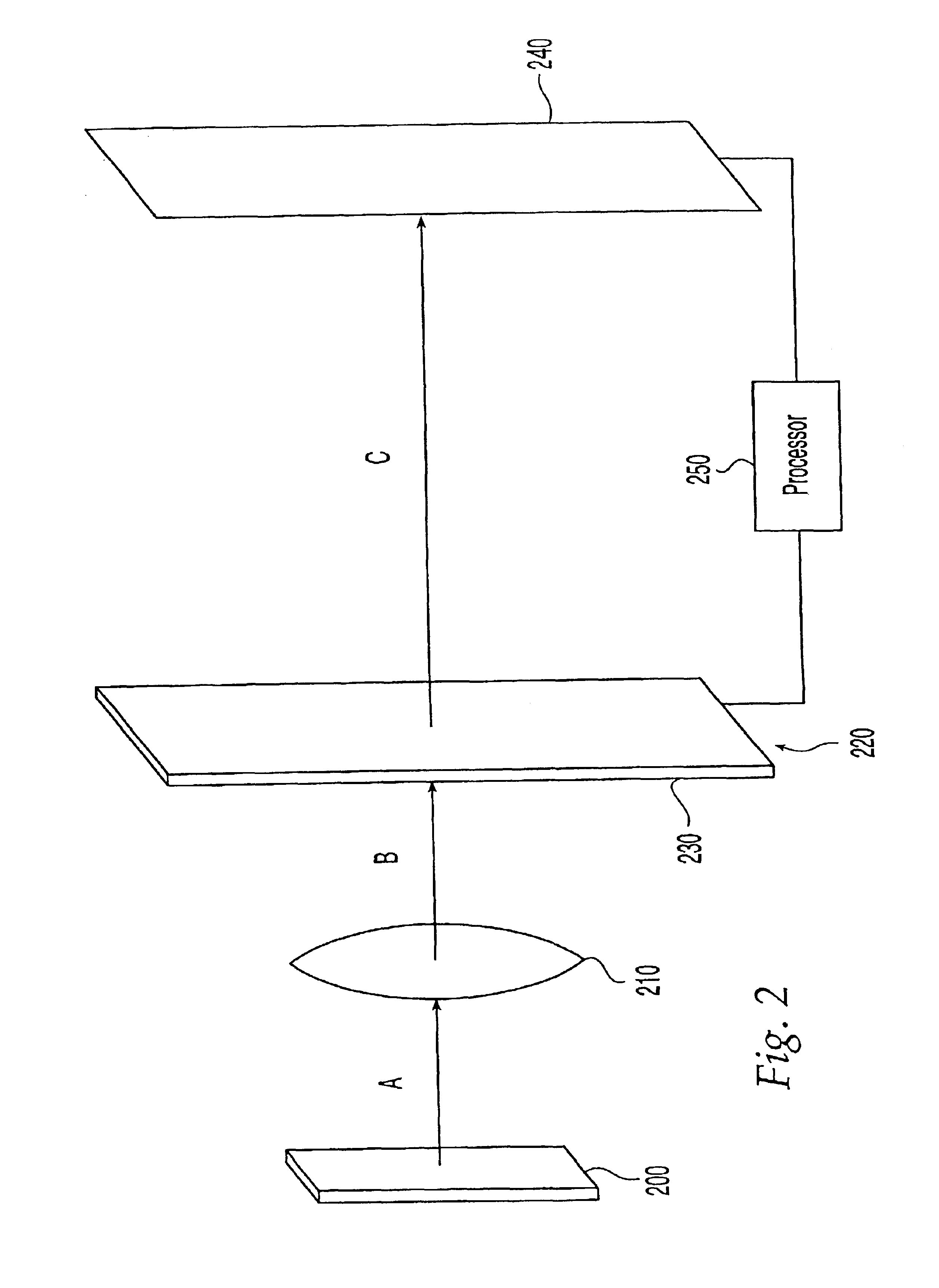System and method for recovering phase information of a wave front
a wave front and phase information technology, applied in the field of system and method for recovering phase information of wave fronts, can solve the problems of low error value, computational intensive prior art methods in trying to distinguish between these slight phases
- Summary
- Abstract
- Description
- Claims
- Application Information
AI Technical Summary
Benefits of technology
Problems solved by technology
Method used
Image
Examples
Embodiment Construction
[0040]The present invention generally applies to propagating wave fronts, along whose path of propagation two planes exist in which the complex wave distributions are related by a transform, which generally would be linear, invertible and energy conservative, such as a Fourier transform. These two planes will also be referred to as conjugate planes. Such conjugate planes exist, for example, between an electromagnetic antenna aperture and its far field (Fraunhofer) plane, or between the object plane and the back focal plane of a convergent lens imaging the object plane, or between the back focal plane of a light camera's objective lens and the camera's image plane, or between the diffraction and the image planes of a transmission electron microscope, or between an X-ray illuminated crystal structure and its diffraction plane, and so on. Given that the ability of recording media is limited to recording only the intensity distribution in these planes, the need arises to recover the pha...
PUM
 Login to View More
Login to View More Abstract
Description
Claims
Application Information
 Login to View More
Login to View More - R&D
- Intellectual Property
- Life Sciences
- Materials
- Tech Scout
- Unparalleled Data Quality
- Higher Quality Content
- 60% Fewer Hallucinations
Browse by: Latest US Patents, China's latest patents, Technical Efficacy Thesaurus, Application Domain, Technology Topic, Popular Technical Reports.
© 2025 PatSnap. All rights reserved.Legal|Privacy policy|Modern Slavery Act Transparency Statement|Sitemap|About US| Contact US: help@patsnap.com



